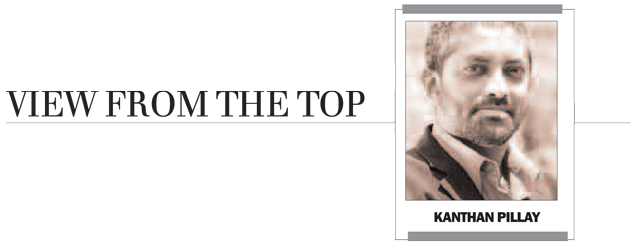
More than 100 years ago, French workers whose way of life was threatened by automation threw their wooden shoes known as "sabot" into mills to disrupt them, hence the word "sabotage".This is almost word for word from a line in Star Trek VI: The Undiscovered Country. Yes, I'm a fan.
When I was a young reporter in 1980, this newspaper was printed on presses which used plates cast by hot metal typesetting.
That process was replaced in the early 80s by web offset printing presses which remain in use to this day. What has changed drastically though are the techniques used to get words and pictures onto the presses.
In the 80s, this was achieved by the words being printed on strips of paper which were then waxed and trimmed by hand and stuck on to a page layout.
Photographs would be scanned into colour separations and similarly stuck on. An image of the finished page would then be turned into four plates – cyan, magenta, yellow, and black – and loaded on to the presses.
In the 90s, newspapers around the world began moving to computer page layout, not unlike what high school kids do today with Powerpoint, Word, and Photoshop.
When I returned to this country age 32 in 1994, I ended up driving the process of migrating Post and its sister papers in Durban into this new technology; which we called 4th Wave.
As a result, we once again had workers whose way of life was threatened by automation.
The historically whites-only SA Typographical Union believed that their highly-paid workers should be responsible for scanning photos using the new technology.
I took the view that the new technology made the process so easy that anyone could be trained to do it.
So I threw down a challenge to them via then Managing Director, Ed Booth: "Give me six weeks," I said. "I will take a person off the streets and train them to do scanning, and let's compare that person's work with the best that the union guys can do."
There were two security guards at Newspaper House working the night shift at that time. One answered to the name Wiseman, and the other to Siyabonga Master. They were both in their 20s, affable, and clearly hungry to better themselves. I asked them whether they would volunteer for the project, and they both grabbed the opportunity.
For the next several weeks, Master and Wiseman would work 6pm to 6am, sleep for three hours, and then make their way to the newsroom where I had enlisted the help of a graphic artist to teach these two how to use an Apple Mac.
Every Saturday, I would then spend three hours or more hours with them teaching them how to scan and colour-correct photographs.
Sabotage struck four weeks into the process. Wiseman fell asleep on his shift as a security guard. A union member saw him and blew the whistle. Wiseman was fired on the spot.
"Well Master," I said, "My reputation now rides on your shoulders."
He grinned and promised not to let me down.
Two weeks later, Master went head-to-head with the union scanners and beat them hands down. Ed Booth gave me the go ahead, and Master became the first employee in a new scanning department.
I left Durban shortly after to move to Johannesburg. At my farewell party, Master took my hand and thanked me profusely. "Mr Pillay, you are my role model and I will follow you to Johannesburg!" he promised.
The rest is a movie script waiting to be shot. Master joined the Sowetan newspaper eventually heading up their prepress department while teaching himself to be a photographer. He returned to Durban where he set up his own studio, becoming the official photographer for then KZN Premier Sbu Ndebele.
He was also official photographer at the recent wedding of President Jacob Zuma's daughter.
Siyabonga Master Mosunkutu died at midnight on Saturday in King Edward VIII hospital of complications arising from high blood glucose levels.
He was 42 years old.
I've been in a strangely philosophical frame of mind since hearing the news. It would be trite to say that he was too young to die. Death comes to all of us at some point.
I can't help but smile though at the thought that while I've mentored dozens of people to success, in many ways, Master's was that which left me most proud.
Hamba Kahle, Master. It was a good journey together.
